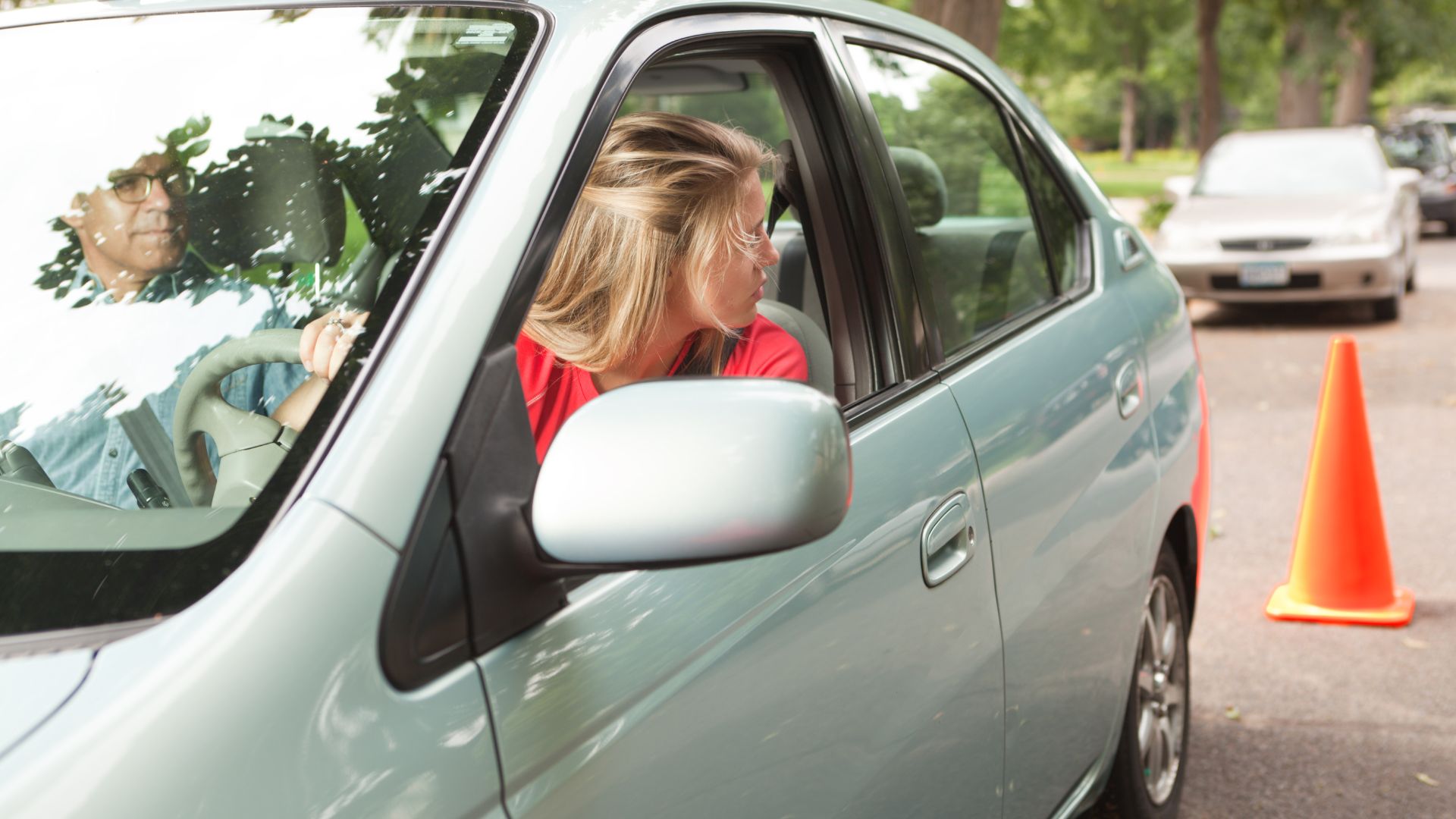You don’t want to use the wrong measurements while practicing parallel parking at home. Most people know what the term ‘Parallel Parking’ means. But if it’s new to you, parallel parking is a parking technique.
It involves parking in line with other parked vehicles by pulling up parallel to the car ahead and then slowly reversing into the space behind it. It isn’t nearly as difficult as it sounds. The Department of Motor Vehicles has published several diagrams illustrating the technique to newcomers.
Determining the distance between parallel parking cones means taking the following factors into account:
1). Vehicle Size
How long is your vehicle? This matters because cones simulate a real parking spot, and parking spaces are usually wide enough to accommodate a car’s average length. Therefore, your car’s size will determine the distance between the cones.
Most cars are roughly 15 feet long (14.7ft). Naturally, the car type matters. Smaller passenger vehicles are shorter (ten feet or less). You also have trucks and trailers that exceed 30 feet.
2). Standard Parking
Look at the standard parking space in NJ. What is the distance between those two lines at the front and back?
You’re looking at 10 to 20 feet.
3). Special Parking
What about special parking spaces? According to the Division of Traffic and Transportation in Trenton, New Jersey, the state expects contractors to assign at least 22 feet (length) to handicap parking spots.
But your local authorities may follow a different set of rules and recommendations. Handicapped drivers need more room to maneuver.
Overall, 15 – 25ft is a decent estimate of the distance between the cones in a driving test. 25ft sounds like a lot. You can fit two cars within 25 feet. However, this should put you at ease.
Many first-time drivers have found that parallel parking during a New Jersey driving test is much easier because the parking space is wider than what you see in real life.
Why You Should Learn To Parallel Park?

This CBS News article announced Nevada’s decision to remove parallel parking from the driving test back in 2020. The goal was to save time. Additionally, Nevada’s DMV found that many drivers passed the majority of the driving test and only failed the parallel parking section.
The department saw no reason to deprive drivers of their licenses simply because they had fallen short in one aspect. Because manufacturers have introduced software that allows the car to park itself, some experts have also argued that parallel parking is an obsolete skill.
It is worth noting that over a dozen states don’t include parallel parking in their driving tests. With that in mind, what is the point of learning to parallel park? The following factors make parallel parking a necessary skill to learn:
- First of all, parallel parking is convenient. It allows you to fit a large car into a small space. Many consumers spend hours each week looking for spacious parking spots in urban centers because they can’t parallel park. This forces them to ignore the small parking spaces they encounter along the way.
- You can park by driving forward into the spot. However, you need at least two unoccupied spaces to succeed. Parallel parking allows you to reverse into a single parking space.
- Parallel parking is still prevalent in various parts of the world. Even if New Jersey eventually eliminates parallel parking from its driving test, what if you migrate to a new country that tests students on their ability to parallel park? Learning to parallel park now will save you a lot of time in the future.
- Parallel parking during a driving test doesn’t stop at testing your ability to park a car. It allows you to prove that you can deftly maneuver the vehicle. It shows the instructor that you have sufficient control. The skill will give you confidence in your ability to navigate complex situations on the road.
Therefore, even though you’ve never had a reason to parallel park in real life, you should learn the skill all the same.
How To Parallel Park In NJ?
- Find a parking space that fits your car. If you’re practicing at home, measure the car’s length. Create a distance between the cones that exceeds the vehicle’s length. But don’t make the distance so large that it simplifies the parking process. You won’t learn anything if you make things too easy. Stick to 15ft.
- Pull up to the car (or cone) ahead of the parking spot. Keep two feet between your vehicle and the other one.
- Back the car into the parking spot while turning the steering wheel. Use the rear window to track your progress. Don’t rely on the mirrors. You can also look out the window. You don’t want to scrape the car in front of the parking spot.
- Wait until your vehicle’s front wheels are opposite the back bumper of the other car (the one ahead of the parking spot). And then turn the steering wheel the other way. If it looks like your car will bump the car ahead, stop, pull out of the parking spot, and try again.
- If everything goes according to plan, you will slide smoothly into the parking spot. Don’t bump the car behind. Turn the wheel until the tires are straight and pull forward. Give the vehicles ahead and behind room to maneuver out of their parking spots.
You can keep pulling forward and back until the vehicle is as close to the curb as you want. This process sounds more complicated than it actually is. Ultimately, parallel parking is comparable to dancing. You won’t understand it without ample practice.
You can watch the below videos to know more in detail!
How Do You Pull Out After Parallel Parking?
- Use the rear window to look for passersby (Cars, motorcyclists, and pedestrians).
- Use the rear-view mirror to watch the car behind you.
- Use the turn signal to show you want to pull out of the parking spot.
- Use the side mirrors to confirm that the road is clear.
- Pull out slowly. You may have to reverse and pull forward a few times if you’re too close to the car ahead.
- You should only drive out of the parking space and into the road when it’s safe.
Tips For Parallel Parking During A New Jersey Driver’s Test
- Your instructor wants to know that you can understand and apply traffic rules. Therefore, it isn’t enough to parallel park successfully. You will lose points if you forget to signal your intent to park using the turn signals.
- You should also signal while pulling out of the parking spot.
- The instructor doesn’t care how you parallel park. They expect you to apply any technique that suits you. Therefore, stick to a method you understand. Don’t mix and match different styles. Pick an approach that works for you, preferably one you’ve practiced.
- Take the car you use during practice to the driver’s test. You’re more likely to succeed because you’re comfortable behind the steering wheel.
- Call your local DMV and determine the size of the parking space they expect you to use. You can get this information from their website. This allows you to practice using the correct dimensions.
- Take your time. Unless the instructor has imposed a time limit, you don’t have to rush.

